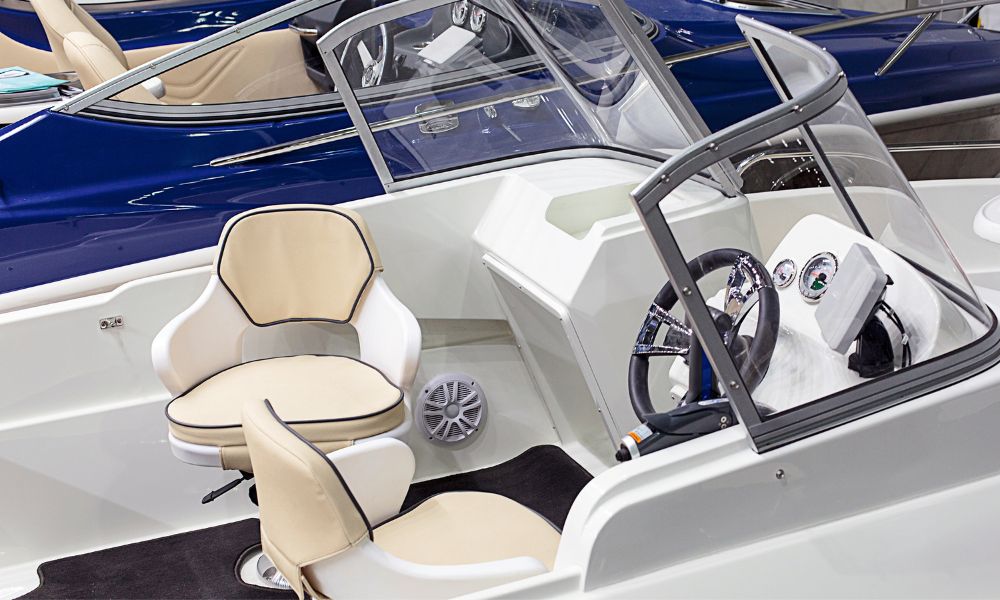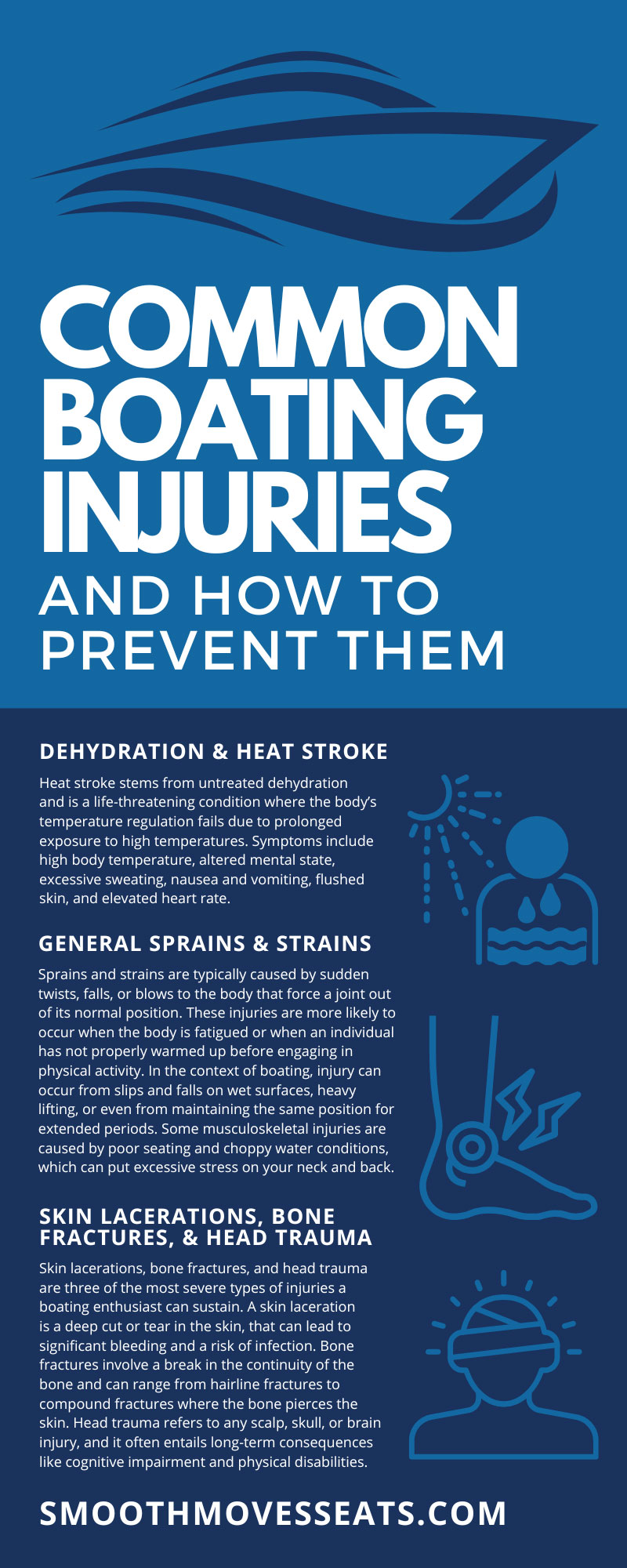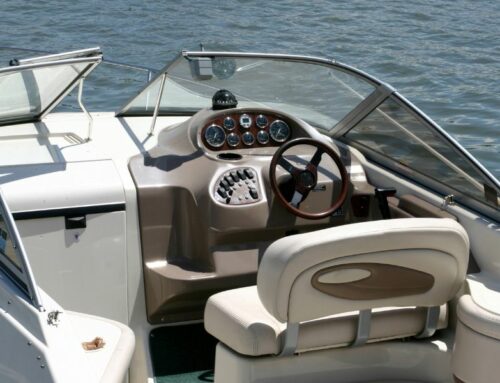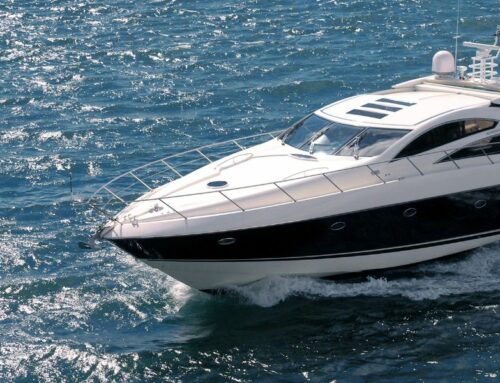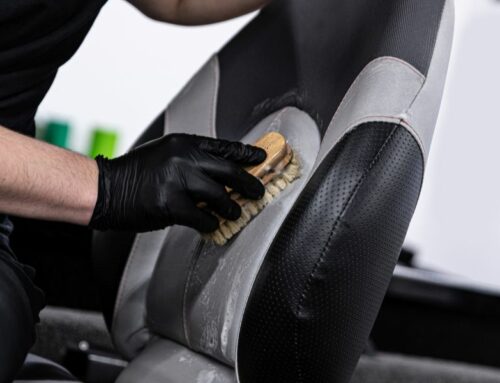From dehydration and heat stroke to sprains, fractures, and burns, boating presents a unique set of challenges that require specific safety measures. Read on to learn more about the most common boating injuries and how to prevent them effectively.
Dehydration & Heat Stroke
Dehydration and heat stroke are two very common but potentially severe boating injuries. Dehydration occurs when your body loses more fluid than you take in, preventing it from performing its normal functions. Symptoms can range from mild, such as thirst and decreased urine output, to severe, including dizziness, confusion, and rapid heartbeat.
Heat stroke stems from untreated dehydration and is a life-threatening condition where the body’s temperature regulation fails due to prolonged exposure to high temperatures. Symptoms include high body temperature, altered mental state, excessive sweating, nausea and vomiting, flushed skin, and elevated heart rate.
These conditions are often precipitated by exposure to high temperatures, particularly during boating activities under the strong sun. Factors that exacerbate these problems include heavy sweating, not drinking enough fluids, wearing heavy or non-breathable clothing, and consuming alcohol, which can lead to further dehydration. Additionally, certain individuals, like those with chronic illnesses, seniors, and young children, may be more susceptible to these complications.
Preventing Dehydration & Heat Stroke
Preventing dehydration and heat stroke involves a few key steps. First, ensure you consume plenty of water throughout your boating trip, even if you don’t feel thirsty, and limit dehydrating liquids like alcohol and caffeine. Dress in lightweight, breathable clothing to allow your body to cool properly. Finally, never push yourself past your physical limits when boating—when you feel dehydrated, it’s well past time for you to return home.
General Sprains & Strains
General sprains and strains are common musculoskeletal injuries that happen all too frequently to boating enthusiasts. A sprain is an injury to a ligament—the tissue that connects bones at a joint—whereas a strain involves an injury to a muscle or tendon. The severity of these injuries can range from mild, with minor pain and swelling, to severe, where the ligament, muscle, or tendon is completely torn. Symptoms often include pain, swelling, bruising, and reduced range of motion.
Sprains and strains are typically caused by sudden twists, falls, or blows to the body that force a joint out of its normal position. These injuries are more likely to occur when the body is fatigued or when an individual has not properly warmed up before engaging in physical activity. In the context of boating, injury can occur from slips and falls on wet surfaces, heavy lifting, or even from maintaining the same position for extended periods. Some musculoskeletal injuries are caused by poor seating and choppy water conditions, which can put excessive stress on your neck and back.
Preventing Sprains & Strains
It’s important to warm up thoroughly before any strenuous activity and to wear appropriate footwear that provides good traction. Regular exercise that strengthens the muscles can also help prevent these injuries. When lifting heavy objects, it’s crucial to use proper form and avoid lifting items that are too heavy for one person. Furthermore, always be aware of your surroundings to avoid slips and falls, particularly on wet or uneven surfaces. And ensure superior seating support by investing in quality air ride boat seats to reduce back and neck stress in choppy waters.
Skin Lacerations, Bone Fractures, & Head Trauma
Skin lacerations, bone fractures, and head trauma are three of the most severe types of injuries a boating enthusiast can sustain. A skin laceration is a deep cut or tear in the skin, that can lead to significant bleeding and a risk of infection. Bone fractures involve a break in the continuity of the bone and can range from hairline fractures to compound fractures where the bone pierces the skin. Head trauma refers to any scalp, skull, or brain injury, and it often entails long-term consequences like cognitive impairment and physical disabilities.
These injuries are commonly caused by accidents such as collisions with other boats or fixed objects, falls within the boat or overboard, and contact with boating equipment like propellers or hooks. Conditions that can exacerbate these injuries include high speeds, rough waters, lack of protective gear, and operating your vessel under the influence of alcohol.
Preventing Severe Physical Trauma
Most severe physical trauma occurs during a boating accident, making these events difficult to predict and prepare for ahead of time. However, there are a few safety measures to consider that can help reduce the odds of suffering lacerations, fractures, or head injuries. Proper footwear and onboard attire protect the body from accidental slips and falls. Furthermore, avoid boating in bad weather or rough waters, and always operate at a safe speed. Finally, remain sober when operating your boat and ensure you have the proper safety certification as required in your state.
Varying Degrees of Burns
Burns are another type of injury that can occur while boating, and they vary in degrees based on their severity. First-degree burns are the mildest and affect only the outer layer of skin, causing pain and redness. Second-degree burns extend to the second layer of skin, leading to blisters, swelling, and severe pain. Third-degree burns are the most severe and damage all layers of skin, potentially affecting underlying tissues.
The majority of boating-related burns are first-degree sunburns caused by overexposure to UV rays. However, extreme sunburns have the potential to become second-degree or even third-degree burns. Accidents involving fuel or engine malfunctions also result in severe skin and tissue injuries.
Preventing Skin Burns
Preventing burns primarily involves safeguarding yourself from the sun, which is often more intense on the water because of the light’s reflection off the water’s surface. Regularly apply a broad-spectrum sunscreen with an SPF of at least 30, even on cloudy days, and reapply every two hours and after swimming or sweating. Wear sun-protective clothing, including a wide-brimmed hat and UV-blocking sunglasses. Seek shade whenever possible, especially during peak sun hours between 10:00 a.m. and 4:00 p.m. Beyond sun protection, maintain a safe distance from hot surfaces and open flames. Regularly inspect and maintain the boat’s engine and other machinery to prevent malfunctions and fires, and keep appropriate fire safety equipment onboard—like fire extinguishers—and know how to use them. Finally, handle all flammable substances carefully and ensure they’re properly stored when not in use.
Boating is a fantastic way to enjoy nature’s beauty, bond with family and friends, or indulge in thrilling water sports. However, safety should always be the top priority. By understanding the most common boating injuries and how to prevent them, you can ensure a successful and safe on-boat experience every single time!



